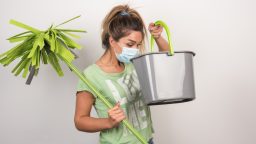Our lungs play a vital role in keeping our body oxygenated and ensuring that we stay energized throughout the day. However, poor air quality, sedentary lifestyles, and stress can affect our lung capacity, leading to shallow breathing, reduced stamina, and even health complications. Fortunately, breathing exercises are an easy and effective way to strengthen the lungs, increase lung capacity, and promote better overall respiratory health. By incorporating specific breathing techniques into your daily routine, you can improve your lung function and enjoy better energy levels, focus, and mental clarity. Let’s explore some powerful breathing exercises to help enhance your lung capacity.
- Diaphragmatic Breathing (Abdominal Breathing)
Why it’s important: Diaphragmatic breathing, also known as abdominal or belly breathing, is one of the most effective techniques to improve lung capacity. It focuses on deep, slow breaths that engage the diaphragm, helping to increase oxygen intake and strengthen the diaphragm muscle.
How it helps:
- Increases oxygen intake: By engaging the diaphragm, you take deeper breaths, allowing more air to enter your lungs and improving your oxygen supply.
- Improves lung efficiency: This technique helps your lungs work more effectively by encouraging full lung expansion and reducing the need for shallow, chest-based breathing.
How to do it:
- Sit comfortably or lie on your back with one hand on your chest and the other on your abdomen.
- Inhale deeply through your nose, allowing your diaphragm to push your abdomen out. Your chest should remain still.
- Exhale slowly through your mouth, letting the air escape naturally as your abdomen falls back.
- Repeat for 5–10 minutes, focusing on slow, deep breaths.
- Box Breathing (Square Breathing)
Why it’s important: Box breathing is a simple yet effective breathing exercise that helps increase lung capacity and promotes relaxation. This technique involves inhaling, holding, exhaling, and holding again in a square pattern, which helps regulate your breathing and boost oxygen supply.
How it helps:
- Improves lung function: By controlling the flow of air, box breathing helps to strengthen the respiratory muscles and increase lung capacity.
- Reduces stress: This technique activates the parasympathetic nervous system, helping to calm the body and reduce stress, which in turn helps you focus on your breath.
How to do it:
- Sit upright in a comfortable position with your back straight.
- Inhale slowly through your nose for a count of 4.
- Hold your breath for a count of 4.
- Exhale slowly through your mouth for a count of 4.
- Hold your breath again for a count of 4.
- Repeat for 5-10 rounds, gradually increasing the duration as you get more comfortable.
- Pursed Lip Breathing
Why it’s important: Pursed lip breathing is particularly useful for improving lung capacity and is often used by people with respiratory conditions such as COPD (chronic obstructive pulmonary disease). This technique helps control the flow of air and keeps the airways open for longer, allowing you to take in more oxygen.
How it helps:
- Increases airflow: By pursing your lips during exhalation, you create resistance that helps empty the lungs more effectively and ensures the airways remain open.
- Improves lung function: It allows for more efficient oxygen exchange, which is essential for increasing lung capacity and stamina.
How to do it:
- Inhale slowly through your nose for about 2 counts.
- Pucker or purse your lips as if you’re about to whistle.
- Exhale slowly and steadily through your pursed lips for 4 counts or longer.
- Repeat for 5-10 minutes, focusing on a slow and controlled breath.
- 4-7-8 Breathing Technique
Why it’s important: The 4-7-8 breathing technique is a relaxation exercise that not only helps improve lung capacity but also reduces stress and promotes a sense of calm. It’s often used as a sleep aid, but it’s also effective for boosting lung efficiency.
How it helps:
- Improves lung function: This exercise allows for deep, slow breaths that increase the oxygen exchange in your lungs and expand your lung capacity.
- Relieves tension: It helps relax the nervous system, lower heart rate, and reduce the production of stress hormones.
How to do it:
- Sit or lie down in a comfortable position with your back straight.
- Close your mouth and inhale quietly through your nose for a count of 4.
- Hold your breath for a count of 7.
- Exhale completely and audibly through your mouth for a count of 8.
- Repeat for 4 cycles, gradually increasing the duration as you get more comfortable.
- Alternate Nostril Breathing (Nadi Shodhana)
Why it’s important: Alternate nostril breathing is a technique commonly used in yoga that helps improve lung capacity, balance energy, and calm the mind. It’s also known to clear nasal passages and improve the efficiency of your breathing.
How it helps:
- Boosts lung capacity: This technique promotes full lung expansion by encouraging deeper and more controlled breathing.
- Improves mental clarity: By focusing on each breath, alternate nostril breathing calms the nervous system and improves concentration.
How to do it:
- Sit comfortably with your spine straight and shoulders relaxed.
- Close your right nostril with your right thumb and inhale deeply through your left nostril.
- Close your left nostril with your right ring finger, and release your right nostril.
- Exhale slowly through your right nostril.
- Inhale deeply through your right nostril, then close the right nostril and exhale through the left.
- Continue alternating nostrils for 5–10 minutes.
- Lion’s Breath
Why it’s important: Lion’s Breath is a powerful breathing technique that engages the diaphragm and throat muscles, helping to expand the chest and improve lung capacity. It’s also a great exercise for releasing tension and boosting energy.
How it helps:
- Strengthens lung muscles: It encourages deep breathing from the diaphragm, promoting full lung expansion.
- Relieves tension: It’s an effective way to release physical and emotional tension in the chest and neck.
How to do it:
- Sit or stand with your back straight and shoulders relaxed.
- Inhale deeply through your nose, expanding your chest and belly.
- Open your mouth wide, sticking out your tongue, and exhale forcefully through your mouth while making a „ha” sound.
- Repeat for 5-10 breaths, focusing on the release of tension with each exhalation.
- The Wim Hof Method
Why it’s important: The Wim Hof Method combines controlled breathing techniques with cold exposure to improve overall health, increase lung capacity, and reduce stress. This method focuses on hyperventilation followed by breath retention, which helps expand the lungs and increase oxygen intake.
How it helps:
- Expands lung capacity: The controlled hyperventilation and breath retention allow the lungs to expand fully and take in more oxygen.
- Improves oxygen efficiency: It increases the body’s ability to use oxygen more effectively, boosting energy and endurance.
How to do it:
- Sit or lie down in a comfortable position.
- Take 30 quick, deep breaths, inhaling fully through your nose and exhaling through your mouth. (You may feel lightheaded, which is normal.)
- After the 30 breaths, exhale fully and hold your breath for as long as you can (without force).
- When you feel the urge to breathe again, take a deep inhalation, hold for 10-15 seconds, and exhale.
- Repeat the cycle for 3-4 rounds.
Conclusion
Breathing exercises are a simple and effective way to increase lung capacity and improve overall respiratory health. By incorporating these techniques into your daily routine, you can strengthen your lungs, reduce stress, and enhance your endurance and energy levels. Whether you’re looking to improve your athletic performance, relieve anxiety, or simply enjoy better lung function, these breathing exercises can provide significant benefits for your physical and mental well-being. Start practicing today and experience the positive effects on your health!





